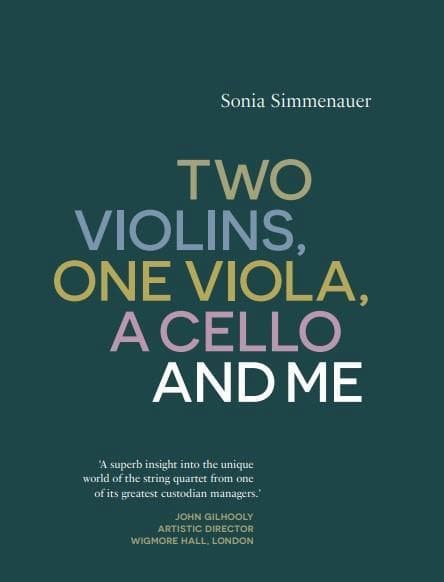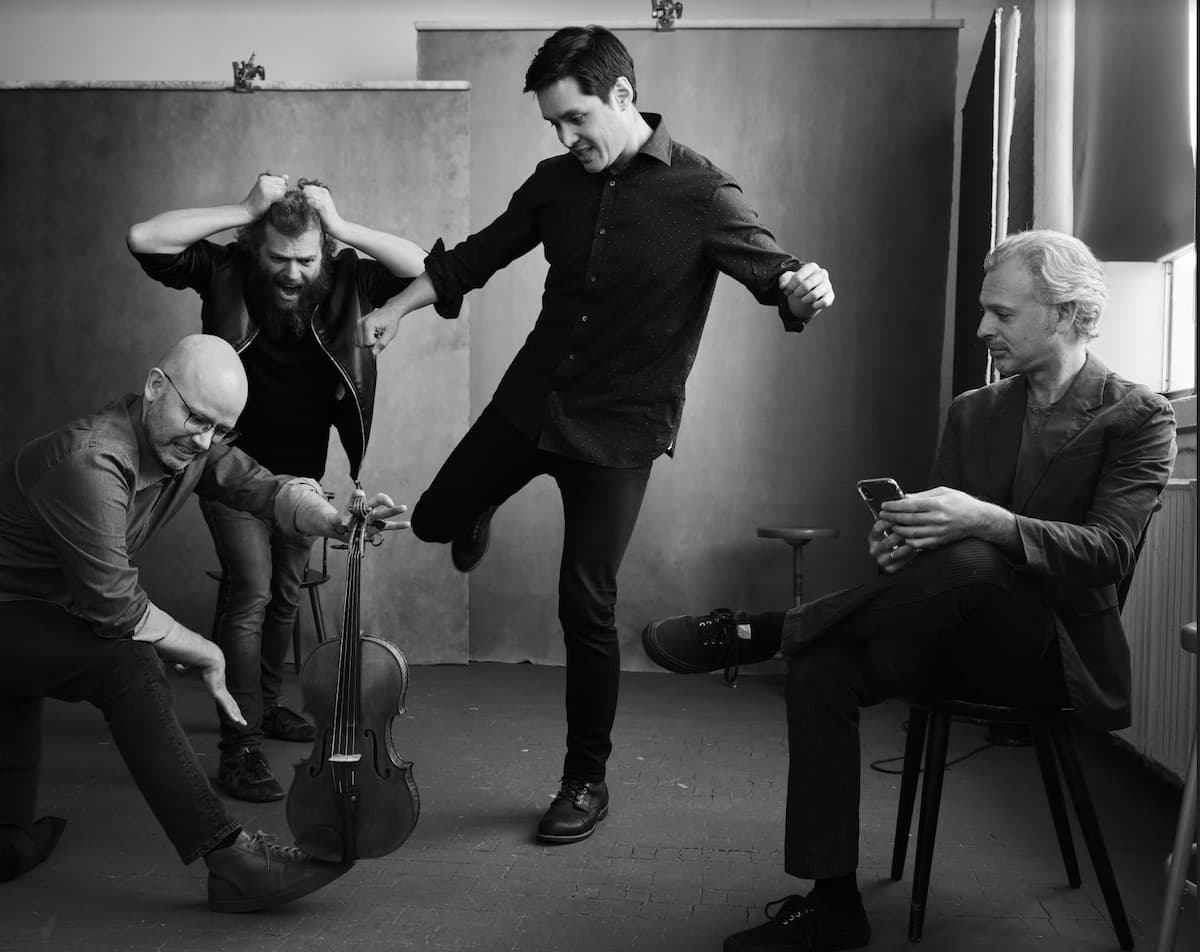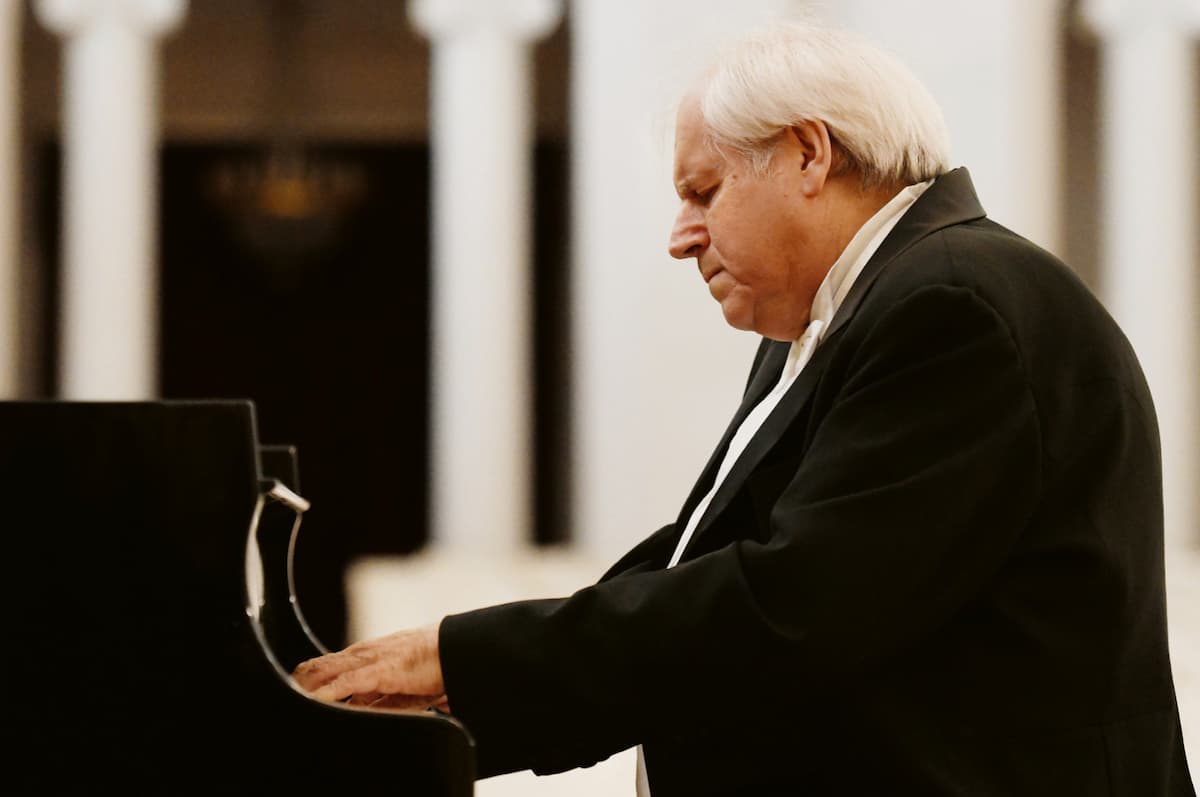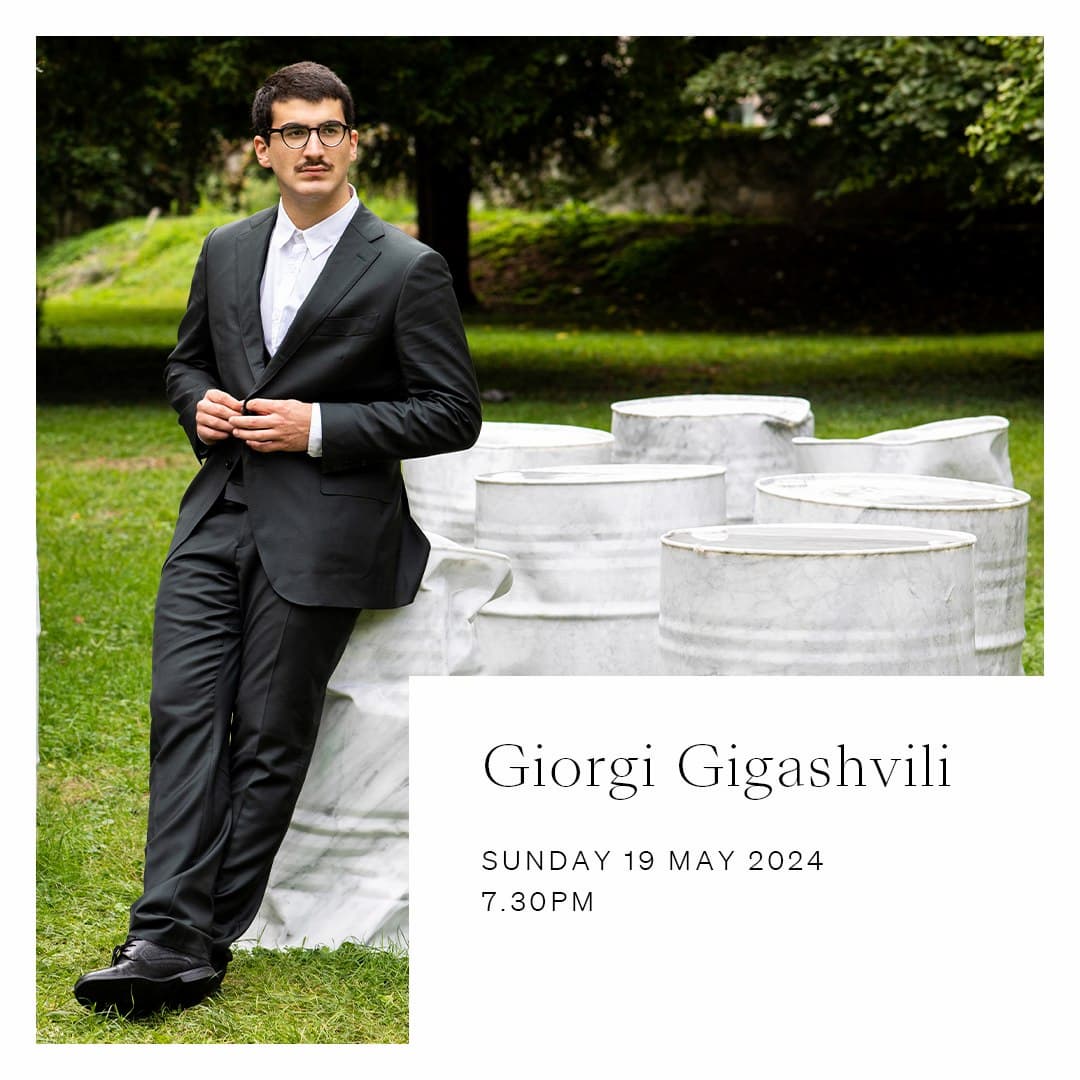“A String Quartet is, at its simplest, four instruments, two violins, one viola, and a cello, along with the four people playing them. But for famous ensembles we admire on the concert stage, it is so much more than that.” So begins a new book published in 2023 by Sonia Simmenauer of Impresariat Simmenauer, an agency that represents some of the most renowned string quartets playing today. The book sheds some light on what motivates string quartets, how they rehearse, how they choose repertoire, how they get along, and why they stay together. Throughout, there are anecdotes and commentary by individual quartet members, and they share the “challenges of a shared identity, shared ownership, and interdependence.”

Two Violins, One Viola, a Cello and Me
Like an orchestral musician who will spend a great deal more time with a stand partner than even their spouse, string quartet musicians share countless hours of rehearsal and performances. Simmenauer describes these details as well as the many other facets of life in a string quartet.
Imagine the complications of a musician traveling on planes, trains, and cars with instruments and suitcases times four. I recall the rigors of touring where each day was not only a new hotel, a new concert hall, and a new city, but oftentimes a new country. Think about the disruption—unusual foods and times for meals, different beds each night, and hours of travel while endeavoring to perform at one’s peak night after night. But who looks after the important role of career building, the details of travel planning, repertoire selection, concert promotion, money juggling, and the myriad other details needing consensus? And what about “normal life” hurdles such as differing personality quirks, individual predilections, family obligations, and health issues? Simmenauer addresses these subjects and more in her book.
Franz Schubert: String Quartet No. 13 in A Minor, Op. 29, No. 1, D. 804 – I. Allegro ma non troppo (Guarneri Quartet)

Sonia Simmenauer © lennart.rühle
Born in the U.S. to a music-loving family, Simmenauer grew up in Paris and studied at the Sorbonne. After interning with several concert agencies, she moved to Germany and founded her own agency in 1989 to focus exclusively on string quartets, the very best, including the Cleveland, Juilliard, Guarneri, Tokyo, and Vermeer Quartets, and the eclectic ensemble Brooklyn Rider to name a few. Then, the agency has branched out and represents select solo artists.
Dana Lyn: Maintenance Music (Brooklyn Rider)
The string quartet, she points out, is a genre that has been significant in the history of classical music originating from around 1770 and is a genre for which composers continue to write. Who didn’t is a better question! Almost everyone from Haydn and Beethoven to Schubert and Debussy; from Bartók and Shostakovich to Philip Glass and György Ligeti; and from George Crumb, Kaija Saariaho, Sally Beamish, to even Arnold Schoenberg. In fact, the true ‘trial by fire’ is to perform the Beethoven String Quartets, which arguably reflect the epitome of his compositions. It’s a difficult formation to write for and perform, and the demands vary with each composer.

Brooklyn Rider © Marco Giannavola
Béla Bartók: String Quartet No. 1, Op. 7, BB52 – III. Allegro vivace (Hagen Quartet)
Philip Glass: String Quartet No. 2, “Company” – III. — (Schumann Quartett)
Philip Glass: String Quartet No. 2, “Company” – IV. — (Schumann Quartett)
The book is divided into several chapters in which the author addresses all facets of string quartet playing. Günter Pichler of the Alban Berg Quartet, one of my favorite quartets, describes the Jekyll and Hyde personality of a string quartet player, “Each member of the quartet has to be as adaptable as a chameleon, able to adopt any possible colour—warm, vibrant, gaudy, soft, muted, or cold…he has to be able to play fast or slow or loud or quiet… he must have complete command. I keep talking about mutual respect, each member has to be so good that he not only has qualities that the others admire…but must also accept the weaknesses that each person has as well.”
Claude Debussy: String Quartet in G Minor, Op. 10 – I. Animé et tres decide (Alban Berg Quartet)

Schumann Quartett © Eva Maria Richter
A thought offered by Raphaël Merlin of Quatuor Ébène struck me, “Each musician is both an artist and a craftsman, a designer and a builder, a leader and a follower, a transmitter and a receiver. (This could possibly be the definitive definition of a chamber musician: one who sends and receives at the same time)… and makes the dialogue ever-ephemeral…Nothing is complete.” This is true for all musicians, as performing necessitates multiple levels of study and preparation. But when four musicians attempt to converge into one, in a quest for one interpretation, one approach, that does become complicated. With only four musicians, one player on a part, each musician is, in reality, a featured soloist as well as a team player.
Ludwig van Beethoven:
String Quartet No. 12 in E-Flat Major, Op. 127 – III. Scherzando vivace – Presto – Tempo I (Quatuor Ébène)

Quatuor Ébène © Julien Mignot
The enormous discipline required and the perfect balance of humility and self-assurance to step onto the stage is the essence of any performing musician’s life. But in the world of a string quartet, each individual must be sublimated for the whole. Simmenauer writes a great deal about the frustrations and constraints of teamwork, or as Ori Kam of the Jerusalem Quartet writes, “ego management.” In addition, perfecting the sound and the blend of a string quartet is an extra and arduous task, which entails a balance between the four players, perfect intonation, the matching of vibrato, cohesive bowings, and articulations, impeccable rhythm, as well as reigning in unfettered expression. In the book, we get multiple points of view from Simmenauer and from individual string quartet artists. I felt there is a great deal of focus on the difficulties of dedicating one’s life to playing in a string quartet, but certainly, Two Violins, One Viola, A Cello and Me is a fascinating window and an inside look into a world that few outsiders can fathom.
The goal of a string quartet is to convey the intentions of the composer with passion and commitment as one. When a quartet achieves this unity, the rewards are spectacular.
For more of the best in classical music, sign up for our E-Newsletter
Learn more from this interview with Sonia Simmenauer.




